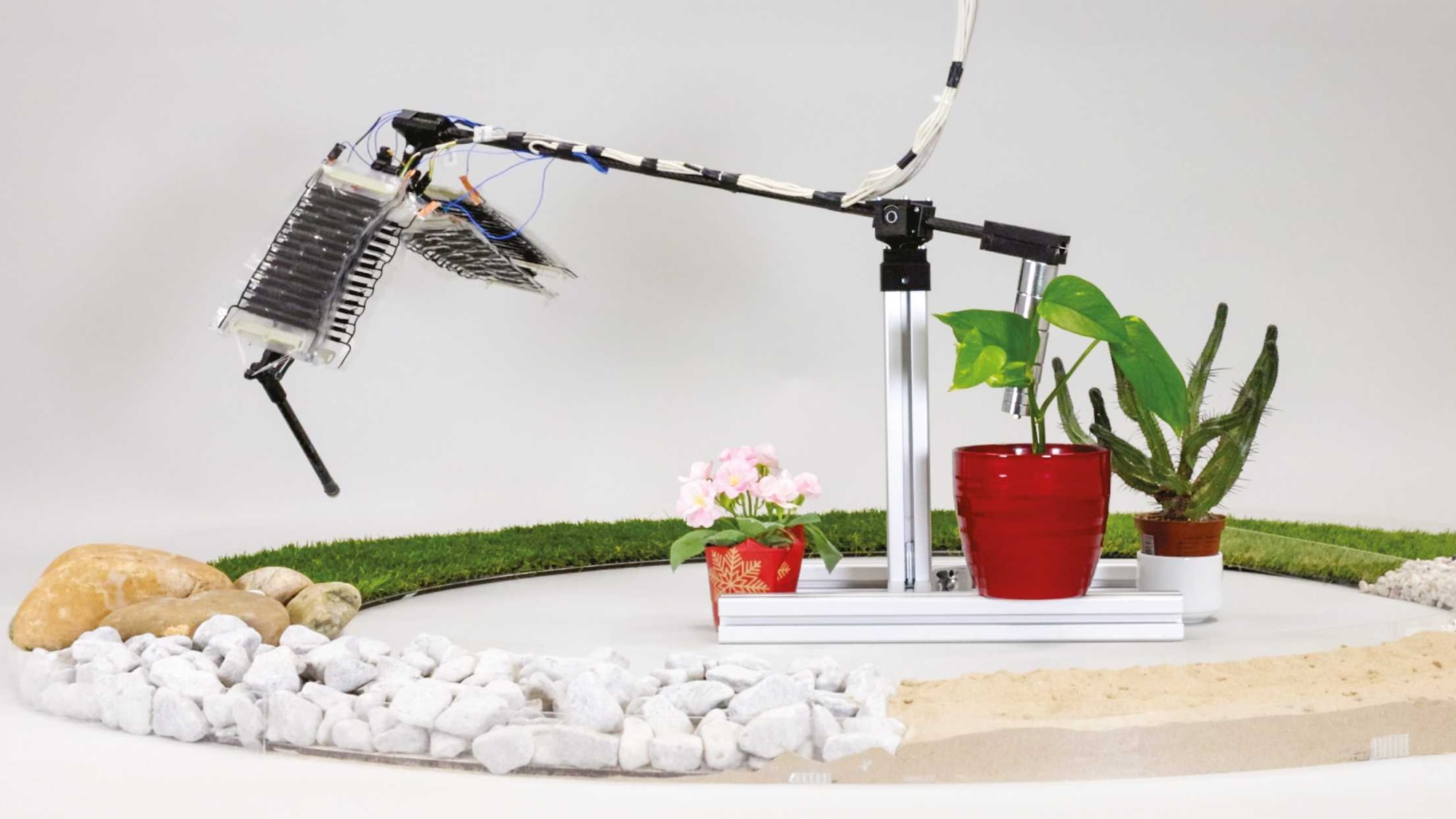Researchers are always looking for new ways to improve the agility, performance, and efficiency of walking robots. Most of the time, this focus has centered on motor advancements. But a team at ETH Zurich and the Max Planck Institute for Intelligent Systems (MPI-IS) is focused on an alternative approach—artificial, electrostatically-powered musculature inspired by animal biology and human anatomy.
Both two- and four-legged robots have become pretty agile over the past few years thanks to design advancements in motor technologies and artificial intelligence. For many of them, however, energy requirements and costs remain a major hurdle, especially when it comes to AI systems needed to interpret vast quantities of environmental sensor data.
To sidestep these problems, collaborators in the new research partnership the Max Planck ETH Center for Learning Systems (CLS) are attempting to mimic a limb’s extensor and flexor muscles without the need for DC motors or high-powered artificial intelligence programs. Instead of the motorized components, the new design uses oil-filled plastic bags that resemble everyday freezer packs. As detailed in a paper published on September 9 in Nature Communications, the team’s new hydraulically amplified, self-healing, electrostatic actuators (HASELs) allow a prototype “leg” to easily hop across uneven terrain types while quickly adapting without generating nearly as much heat as traditional motor-powered options.
To make it work, two “muscles” composed of four separate, conductive oil-filled bags are partially covered on each side with electrode patches. The muscles are then attached by artificial tendons to a lightweight carbon fiber skeleton frame featuring 3D printed knee and hip joints. Then, when it’s time to begin leaping, the team starts shocking.

“As soon as we apply a voltage to the electrodes, they are attracted due to static electricity,” Thomas Buchner, a doctoral student and study co-first author, said in ETH Zurich’s accompanying announcement on September 9.
Buchner likened the charges to what occurs when you rub a balloon against your head, causing your hair to stick to it. As the voltage increases, the electrodes contract closer to one another and push the bag’s oil to one side and shorten its overall shape in the process. Like in an animal or human leg, one muscle shortens as its partner lengthens.
These precise, rapid shifts in muscle size and shape are critical to successfully moving across an environment. To determine the proper voltage needed to handle the terrain underneath it, the robotic leg relies on a specially designed computer code to interpret two input signals—one to extend a joint and the other to bend it. After each leap, the leg’s joint adjusts to a proper angle depending on the hardness or plasticity of the surface underneath it.

“Adapting to the terrain is a key aspect. When a person lands after jumping into the air, they don’t have to think in advance about whether they should bend their knees at a 90-degree or a 70-degree angle,” Toshihiko Fukushima, also doctoral student and co-first author, said on Monday.
[Related: Watch Google’s ping-pong robot beat humans at their own game.]
The combination of comparatively simple sensors and computer coding also means the team’s robot leg is much more energy efficient than existing, motor-powered systems. This is particularly the case when it comes to unnecessary heat generation. Using thermal imaging, a DC motor-enabled leg’s wiring generated temperatures nearing 100 degrees Fahrenheit. The HASEL design, meanwhile, created virtually no excess heat. Compared to a control leg using a DC motor, the HASEL-enabled limb also required just 1.2-percent the energy as the motorized, electromagnetic design. According to Fukushima, this means their system doesn’t need the same heat management tools as motor-driven robots, such as heat sinks or fans.
For now, however, the muscle-powered limb will need to remain anchored in place on its small, circular track. Although much more work and improvements are needed before the team can test an untethered version, researchers believe the energy-efficient and simplified design may one day find its way into both quadrupedal and bipedal bots that rival, if not surpass, today’s motorized machines.

